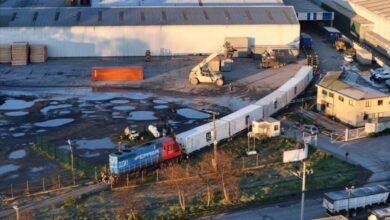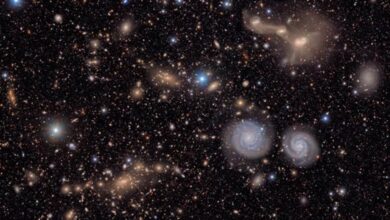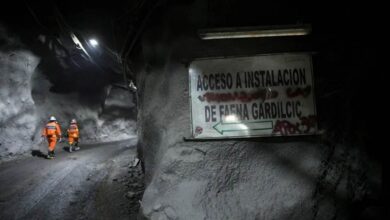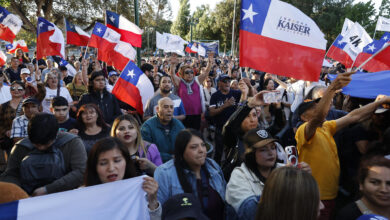Chile’s Salmon Export Boom Teeters on Fragile Regulatory Reforms
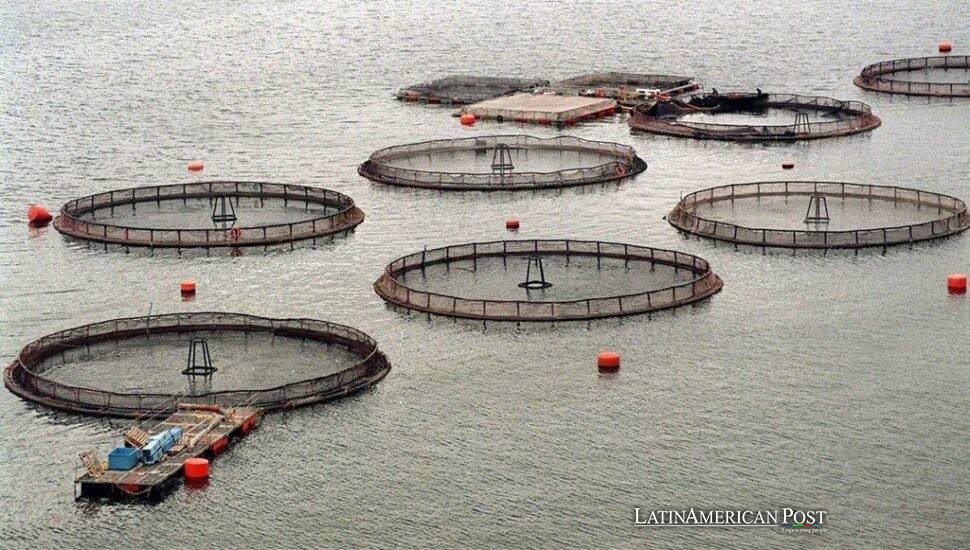
Chile’s salmon empires churn in glass-blue fjords once thought untouchable. With elections looming and protected waters in their nets, producers confront an uneasy question: can the nation keep feeding the world without devouring the wilderness that built its fortune? This is an adapted version of an original report by the BBC.
Boom on the Fjords
Dawn breaks over Puerto Montt like a flash of solder on the tin, and the processing plants hum to life. Inside their chilled halls, line workers in white coats glide fillets onto conveyor belts that are never relatively slow, the air sharp with ice and brine. A generation ago, these streets echoed mostly with gulls; today, they echo with forklift horns and shouted orders in Spanish, Mapudungun, and Haitian Creole. Salmon changed everything.
In the 1980s, British fish eggs arrived bundled in Styrofoam, the improbable seed of an industry worth more than US $6 billion a year—Chile’s third-largest export after copper and fruit. Out on Reloncaví Sound, more than 1,300 floating pens dot the water like metallic confetti. When the tide turns, thousands of silvery bodies swirl beneath each cage, awaiting the next feed pellet drop. They will end up as sashimi in Tokyo, bagels in Manhattan, or steaks in Madrid.
Local politician Francisco Lobos still recalls the 1990s, when Puerto Montt’s unemployment scraped double digits, and kids left for Santiago or nowhere. “Salmon,” he says, “was lightning in a bottle.” Today, technicians earn two or three times the regional average; boatbuilders, welders, and net cleaners chase steady contracts. Airline routes multiplied. Hospitals trade battered X-ray machines for MRI scanners, funded by export taxes. For many families, the industry’s rise felt like a door flung open—proof that Patagonia’s riches were not limited to postcards and tour buses.
Analysts predict global demand will leap another 40 percent within a decade. Chilean executives scent opportunity. They talk of new vaccines to fight sea lice outbreaks and automated underwater cameras that track feeding so that not a single pellet sink is wasted. They talk in English, Norwegian, and Japanese, the language of investors eager for a protein that grows faster than beef and leaves a lighter carbon footprint. Yet behind the confidence is an unmistakable tremor—a sense that the tide that raised them all could just as easily reverse.
Patagonia Pushes Back
Sail fifty miles south, and the roar of compressors fades into a hush of kelp forests and seal barks. Here begins the sprawling network of national parks and marine reserves Chile has promoted as its “last frontier of purity.” Yet 408 salmon concessions float inside those supposedly protected lines—a figure environmentalists wield like a blade.
Marine biologist Flavia Liberona pilots a skiff across a bay ringed by snow peaks, pointing to a pen where the water shimmers green. “Pellets in, feces out,” she says, lifting a clear jar of sludge scooped from the seafloor. Under the cages, tongues of anoxic mud spread out, suffocating mussel beds that local divers once harvested for pocket money. Flavia’s group, Terram, wants every farm removed from parks and reserves with zero compromise and zero delay. Their campaign videos show puffins gulping down plastic feed pellets and tide pools coated in oily residue.
Industry counters that the story is more nuanced. Arturo Clements, chairman of trade group Salmón Chile, flips through maps showing unused permits smack in park boundaries. “We’re already trying to leave,” he says, noting 21 inactive concessions his members have offered to relocate. But relocation means new sites and new sites mean new fights: with artisanal fishermen who fear competition, with tourism operators guarding their pristine vistas, and with coastal Indigenous communities who distrust both corporations and ministries.
Government regulators tread a wobbly bridge. Undersecretary Julio Salas Gutiérrez promises stricter rules in a draft aquaculture law—tighter fallow periods, more rigid antibiotics caps, and steeper fines for escape events. Yet elections loom, and politicians north of the Bio-Bío avoid angering a sector that pays thousands of salaries. In parliamentary hallways, lobbyists warn that hasty crackdowns will drive capital to Norway or Canada. Environmental caucuses counter that Patagonia has no Norway to flee to; once a fjord is fouled, no second fjord rises in its place.
The standoff seeps into coastal villages. In Calbuco, teenagers chant “¡Salmones sí, pero no aquí!” at a town-square protest, then slip away after sunset to night shifts cleaning nets for the companies they oppose. A captain who ferries divers to pens by day spends weekends volunteering for an NGO that tracks endangered dolphins. Contradictions blur until they feel like the water—brackish, restless, perpetually in motion.
A Future Caught in the Current
What, then, is the path forward? Consultants speak of land-based recirculating aquaculture systems, giant concrete pools inland that recycle 99 percent of their water. Pilot projects glimmer near Puerto Varas, their roofs bristling with sensors, their biofilters purring like spacecraft. If scaled, they could free Patagonia’s seas from cages altogether. However, the investment runs into hundreds of millions, and electricity prices in Chile stand among South America’s highest. Banks hesitate to calculate payback periods against regulatory risk.
In the meantime, marginal improvements arrive piecemeal. One company trials feed coated with probiotics to cut waste; another installs deep-current diffusers to disperse sludge. Progress reports trumpet reductions in benthic impact scores, yet critics note that even improved scores are measured against baselines set during years of unchecked expansion. The bar, they argue, was never high enough.
For 86,000 Chileans living off salmon’s ripple effect—drivers, accountants, cafeteria cooks—each headline about new restrictions tightens the chest. They remember 2007, when the ISA virus ravaged stocks, wiping out 25,000 jobs almost overnight. They know ecosystems and economies can collapse with equal ruthlessness. The question haunting boardrooms and break rooms alike is whether Chile can script a second act that marries prosperity to preservation before the audience walks out.
Also Read: How One Peruvian Farmer’s Battle Inspires Climate Liability Movements
On clear nights, the processing plants switch off their roof lights to save power, and Puerto Montt’s harbor lies under a blanket of stars. Floating pens blink red navigation beacons in the channels beyond, each pulse marking fish that have never tasted open ocean yet circle ceaselessly beneath it. In those rhythmic flashes, one can read the paradox of Chilean salmon: an industry born from pristine waters now struggling to prove it can coexist with the purity that sells its product. Whether the nation charts a balanced course or watches opportunity sink beneath environmental backlash will define not just export tallies but the soul of Patagonia’s seas for generations.

